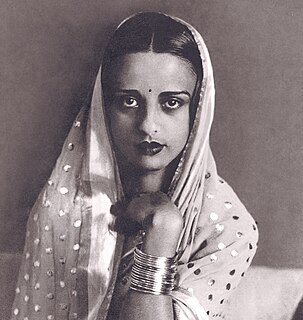
Miklós Horthy de Nagybánya, was a Hungarian admiral and statesman who served as the regent of the Kingdom of Hungary between the two World Wars and throughout most of World War II – from 1 March 1920 to 15 October 1944.

Victor Vasarely, was a Hungarian-French artist, who is widely accepted as a "grandfather" and leader of the Op art movement.

Count Pál János Ede Teleki de Szék in English : Paul John Edward Teleki, or in short: Paul Teleki was a Hungarian politician who served as prime minister of the Kingdom of Hungary from 1920 to 1921 and from 1939 to 1941. He was also a famous expert in geography, a university professor, a member of the Hungarian Academy of Sciences, and Chief Scout of the Hungarian Scout Association. He descended from an aristocratic family from Alsótelek in Transylvania.

Cegléd is a city in Pest county, Hungary, approximately 70 km (43 mi) southeast of the Hungarian capital, Budapest.

Mihály Babits was a Hungarian poet, writer and translator. His poems are well known for their intense religious themes. His novels such as “The Children of Death” (1927) explore psychological problems.

Szőke Szakáll, known in the English-speaking world as S. Z. Sakall, was a Hungarian-American stage and film character actor. He appeared in many films, including Casablanca (1942), in which he played Carl, the head waiter, Christmas in Connecticut (1945), In the Good Old Summertime (1949) and Lullaby of Broadway (1951). Sakall played numerous supporting roles in Hollywood musicals and comedies in the 1940s and 1950s. His rotund cuteness caused studio head Jack Warner to bestow on Sakall the nickname "Cuddles".

Amrita Sher-Gil was a Hungarian-Indian painter. She has been called "one of the greatest avant-garde women artists of the early 20th century" and a "pioneer" in modern Indian art. Drawn to painting from an early age, Sher-Gil started getting formal lessons in the art, at the age of eight. She first gained recognition at the age of 19, for her oil painting titled Young Girls (1932). Sher-Gil depicted everyday life of the people in her paintings.

Árpád Szenes was a Hungarian-Jewish abstract painter who worked in France.

Bábonymegyer is a village in Somogy County, Hungary. Until 1927 it was two separate villages, Nagybábony and Koppánymegyer.

The Kingdom of Hungary, sometimes referred to as the Regency or the Horthy era, existed as a country from 1920 to 1946 under the rule of Regent Miklós Horthy, who nominally represented the Hungarian monarchy. In reality there was no king, and attempts by King Charles IV to return to the throne shortly before his death were prevented by Horthy.

Róbert Berény was a Hungarian painter, one of the avant-garde group known as The Eight who introduced cubism and expressionism to Hungarian art in the early twentieth century before the First World War. He had studied and exhibited in Paris as a young man and was also considered one of the Hungarian Fauves.

Géza von Bolváry was a Hungarian actor, screenwriter, and film director, who worked principally in Germany and Austria.
Desiderius Orban, was a renowned Hungarian painter, printmaker and teacher, who, after emigrating to Australia in 1939 when in his mid-50s, also made an illustrious career in that country.

János Thorma was a Hungarian painter. A representative figure of the Nagybánya artists' colony, which started in 1896, in Nagybánya, Austria-Hungary, He moved through different styles, shifted from the naturalism that was the aesthetic of the colony, to historical subjects, to romantic realism and to a Post-Impressionism style. His work is held by the Hungarian National Gallery, the Thorma János Múzeum, regional museums and private collectors.

Béla Iványi-Grünwald was a Hungarian painter, a leading member of the Nagybánya artists' colony and founder of the Kecskemét artists' colony.

Lajos Tihanyi was a Hungarian painter and lithographer who achieved international renown working outside his country, primarily in Paris, France. After emigrating in 1919, he never returned to Hungary, even on a visit.

György Kürthy was a Hungarian actor, scenographer, writer and director of the theatre.
Ilona (Ili) Kronstein was a Jewish, Budapest-born artist. Although Kronstein was originally a graphic artist by trade, her artistic style evolved over her lifetime. Her works were newly discovered in the late 1990s and were later exhibited at the Jewish Museum in Vienna, Austria.

The Mayor of Budapest is the head of the General Assembly in Budapest, Hungary, elected directly for 5-year term since 2014. Until 1994 the mayor was elected by the General Assembly. The office was called Chairman of the Council of Budapest between 1950 and 1990, during the Communist period.
George Peck is a New York-based visual artist. Born in Hungary, his work has appeared in exhibitions across the United States and Europe, and his work is represented in such museums as The Metropolitan Museum of Art, and Brooklyn Museum of Art in New York City, High Museum of Art in Atlanta, The Museum of Fine Arts Budapest, Kiscelli Museum in Budapest, and Museum of Modern Art in Sweden.




















